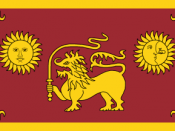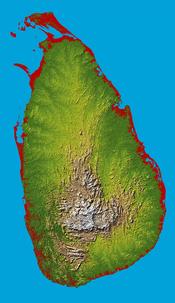The word tea comes from the Chinese local Amoy dialect word t'e, pronounced "tay". The usefulness of the tea plant is due to the special composition of its young leaves, which provides the material for producing tea. The finished product, which serves to make the well-known beverage, the tea drink, is mainly marketed in the form of fermented black tea: in some countries, however, unfermented or partially fermented tea as well. The product tea is made from the young green shoots, which during processing are physically and chemically changed.
The traditional major producing countries in Southeast Asia are India, Bangladesh, Sri Lanka, Japan and Indonesia.
Ceylon tea from Sri Lanka, acclaimed as the best tea in the world has its inherent unique characteristics and reputation running through more than a century. The influence of climatic conditions of its plantation imparts to the product a variety of flavors and aromas, synonymous with quality.
However the first commercial planting of tea in Sri Lanka was undertaken in the year 1867. By the turn of the century over 120,000ha of tea had been planted, which increased to 238,770ha by 1965. Currently Sri Lanka is the 3rd biggest tea producer with a market share of 9%.
Sri Lanka produces tea throughout the year and the growing areas are mainly concentrated in the central highlands and southern inland areas of the island. They are broadly grouped under these headings according to their elevations, with high grown ranging from 1200 m upwards, medium grown covering between 600 m to 1200 m. and low grown from sea level up to 600 m.
Sri Lanka mainly produces orthodox teas. In the orthodox process of production, semi dried green shoots are ruptured by rolling achieved from a rotary movement. The rolling process ruptures and twists the leaves. When...


